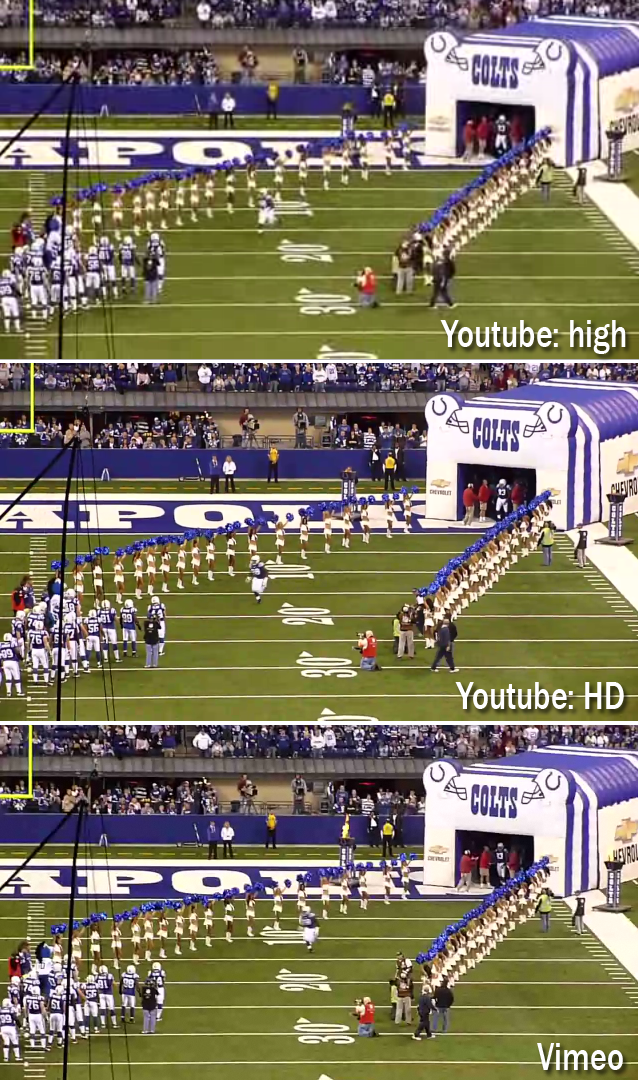Like any other monkey with a digital camera, I’m a fan of occasionally dumping videos online. Youtube has always been the de facto place to put your vids online quickly and for the widest distribution. But being popular was also the cause of their biggest shortcoming: crappy quality. With millions of videos and viewers they simply don’t have the capacity to stream top quality vids to everyone. So, they take your nice, shiny, possibly even hi-def, videos and squash them down to blocky, tin can sounding shadows of themselves. Even when they added a “watch in high quality” option I was “highly” underwhelmed.
Early this year I evaluated a dozen other user submitted video sites looking for a higher quality option. I even considered just hosting my own videos. I settled on Vimeo whose default high quality bitrate and 16:9 player were much better than what Youtube could offer. I still used Youtube for most uploads, but if there was a video that I really didn’t want to compromise too far, I’d stick it on Vimeo.
Well, it’s time for another review because Youtube is trying to right themselves with a new, larger 16:9 player and new, higher quality encoding. As a test I took a hi-def (720p) video I recently put together. The original vid is an H.264 encoded MPEG4 and is about 69MB and 2 minutes and 17 seconds long, which puts the original bitrate at 4110 Kbps.
This video looks dramatically different with the options available on Youtube. It’s as noticeable as anywhere looking at samples of text in the video. Unfortunately the default that Youtube viewers will see is the worst. The “normal quality” view in Youtube is highly compressed (over 10:1), down to a 326 Kbps bitrate (making the resulting file only 5.3MB). As part of the compression, the original 1280×720 size has been reduced down to 320×180. Furthermore, the audio has been smashed into mono at 22kHz. Clicking on the “high quality” improves things dramatically. Now the bitrate is 1034 Kbps (total file is 16.8MB) and although the audio is still mono it’s held at a respectable 44KHz.

Then there’s a little known way to force Youtube to reluctantly hand over a truly decent HD file. Add the special parameter “&fmt;=22” to the end of the URL and now we finally have something that can compete with Vimeo. In this case, Youtube streams back a very similar video as I gave it. The video is a H.264 encoded MPEG4 with the original HD dimensions, but compressed down to 2229 Kbps (total file = 36.3MB). The audio is respected too, encoded as stereo AAC at 44kHz. The only caveat is that the file may not stream as smoothly to all viewers.

For comparison the Vimeo video is the same physical size, but encoded with the On2 VP6 codec down to a 1748 Kbps stream. The audio is a stereo mp3 track at 44kHz. One interesting difference is in the frame rate. The hidden-HD option on Youtube kept my video at the original TV standard 29.7 fps, while Vimeo automatically renders videos at the film standard 24 fps.
Tags: web






